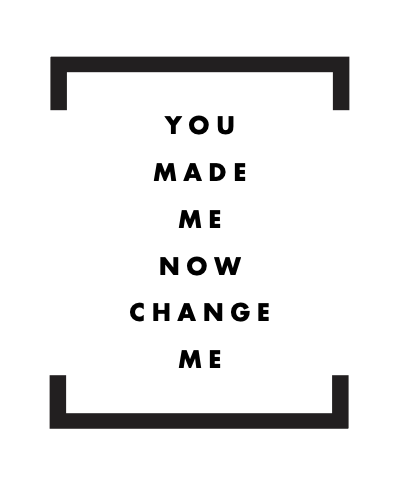3. Circular Open Source Fashion¶
Research & Ideation¶
weekly assignment
Check out the weekly assignment here or login to your NuEval progress and evaluation page.
Circular Open Source Fashion Lecture Notes
Miceala Culbourg Lecture Notes
Alumni Inspiration!
Alumni projects that inspired me
References & Inspiration¶
One of the main things I wanted to clarify for myself this week with my research was the difference between 'Open Source Fashion' and older systems of disseminating fashion trends where most people would have access to patterns or an example garment - e.g. Queen Anne Dolls - and make their own versions from this.

As fashion production is still very craft based, not having developed too much technically from the introduction of the sewing machine, it is hard to see how the initial open source movement which seems very digitally based can impact fashion production in a meaningful way. Because of this, it seems like the impact of open source ideas on fashion is more about encouraging re-learning of the garment construction and tailoring knowledge that has been limited by industrialisation. In this way, the goal should be that the consumer of a product is no longer completely distinct from the designers and makers, and told by large advertising companies which pre-made products they need, not just making some patterns available online.
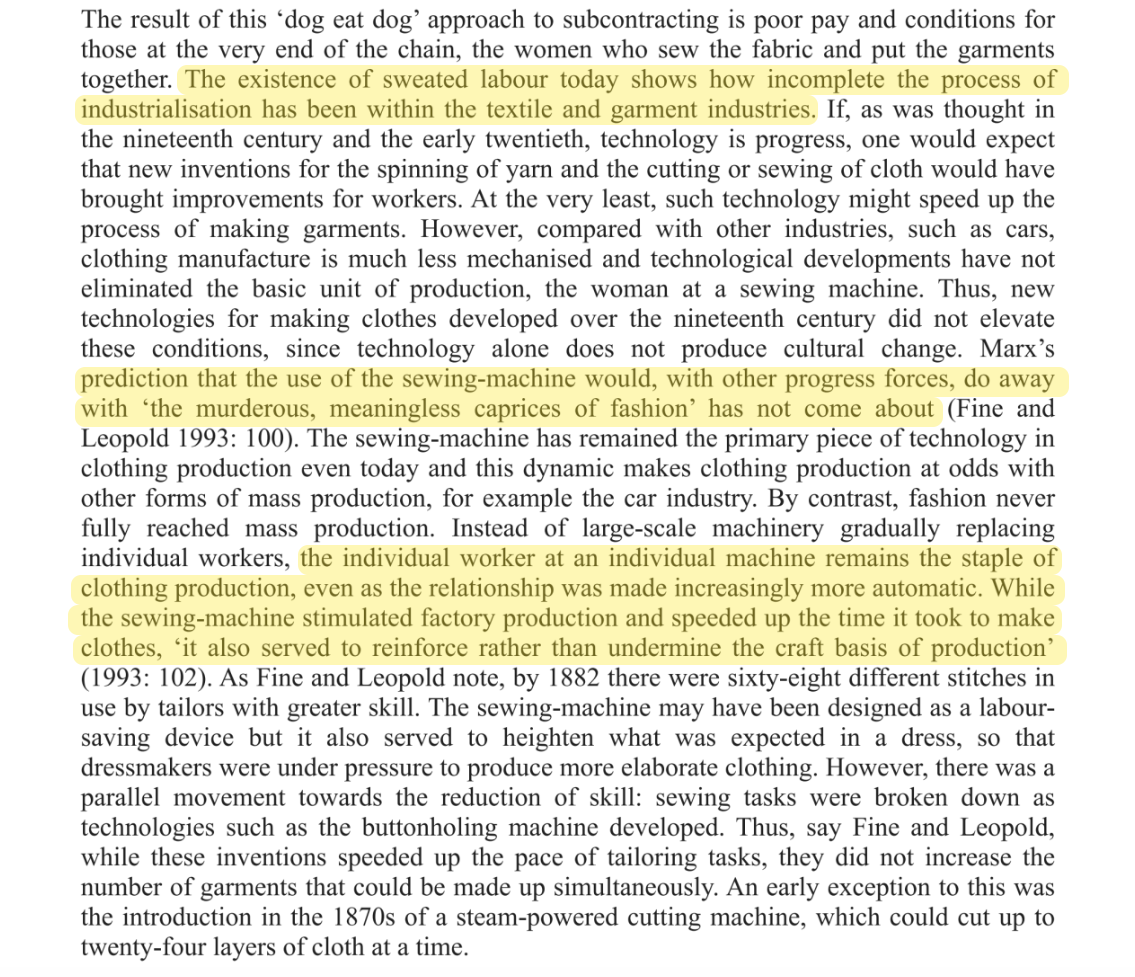
Being able to alter and remake as you like is integral to this and upcycling and sharing these skills is an important was of dealing with waste, however, I do think this is a start not the end goal. I think circularity – which open source ideas would feed into - demands a complete severing from the current linear production to consumption model, way past the minimal notion of recycling a fibre. To truly embrace a circular model, we must relink all actors within the design/supply/consumer chains to all other points. These interactions are, I think, the grounds on which we break the Black Box model that encourages the current alienation and throwaway culture.
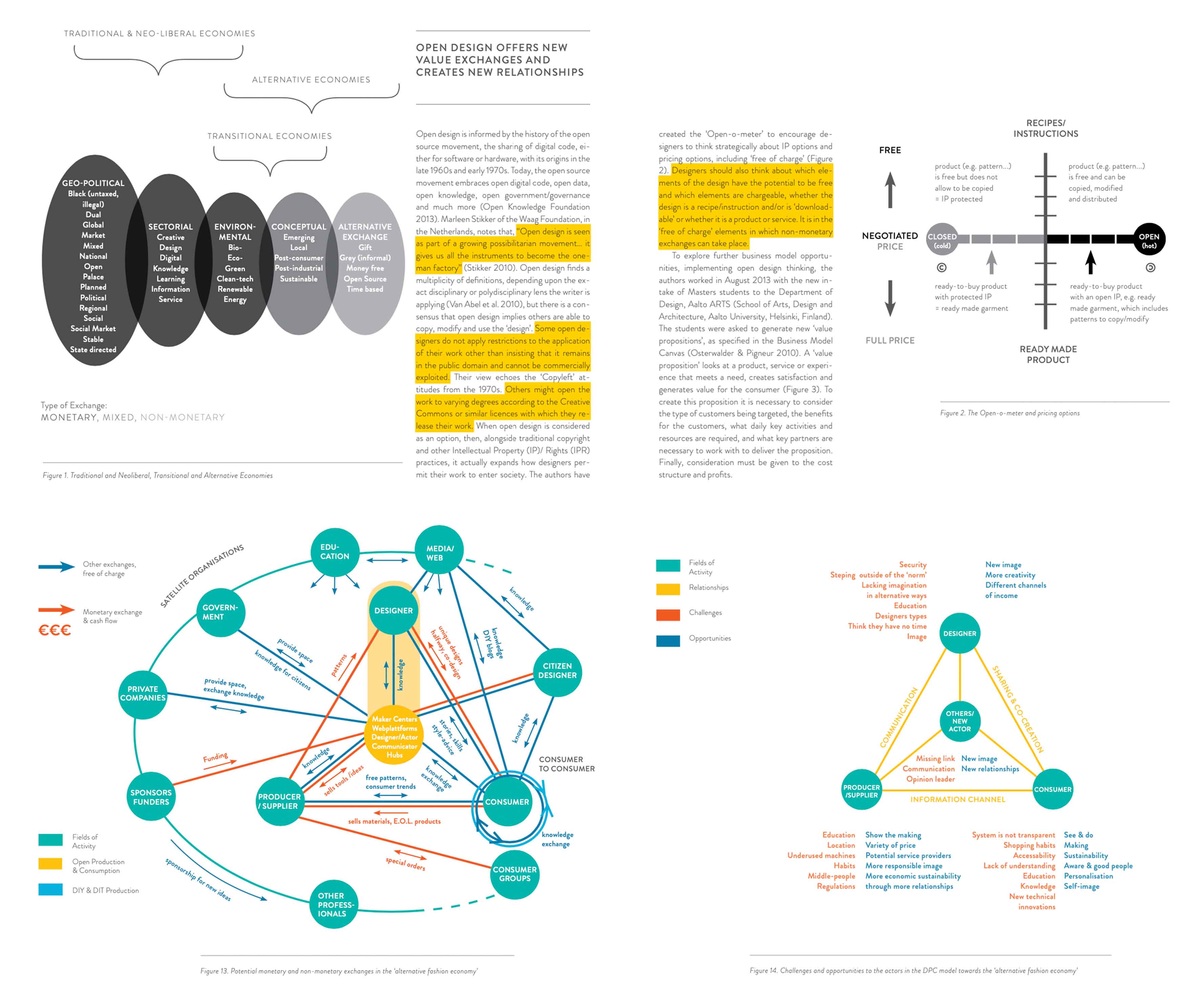
This also requires discussions around ownership of both the physical garments and the images and ideas produced by fashion, by moving towards a model of production that requires creation by the consumer we open up the possible outcomes and lessen the intellectual control of the designer.
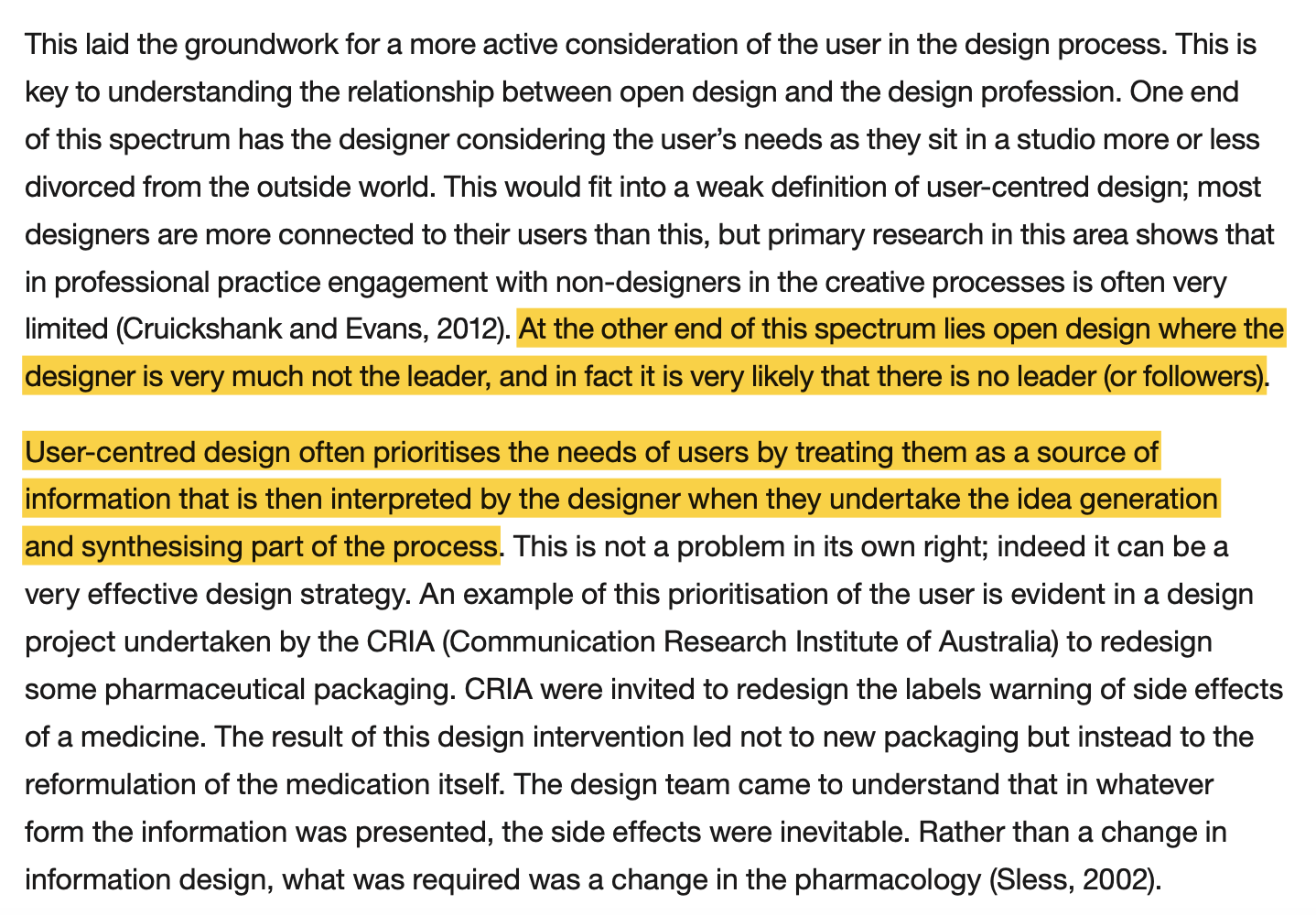
Additionally, closing the loop of production can only be done with the input of those who own a garment at the end of its traditional lifecycle, but to place the whole responsibility here undermines the potential of the new system. Questioning the ownership of garments in this way, leads into a similar questioning of the ownership of the ideas behind the garment - be that the design or pattern or less tangible ideas like the marketing and social value - that offers a new way of examining the copycat culture that is driving the speed of fast fashion. I think to understand circularity as only a repetition of the existing linear system falls short of what could be a genuinely innovative, open and collaborative clothing system.
I looked into a selection of different proposals for designing and producing in ways different to the basic CMT method we use now for inspiration with this. These included:
Woven Textile-Forms¶
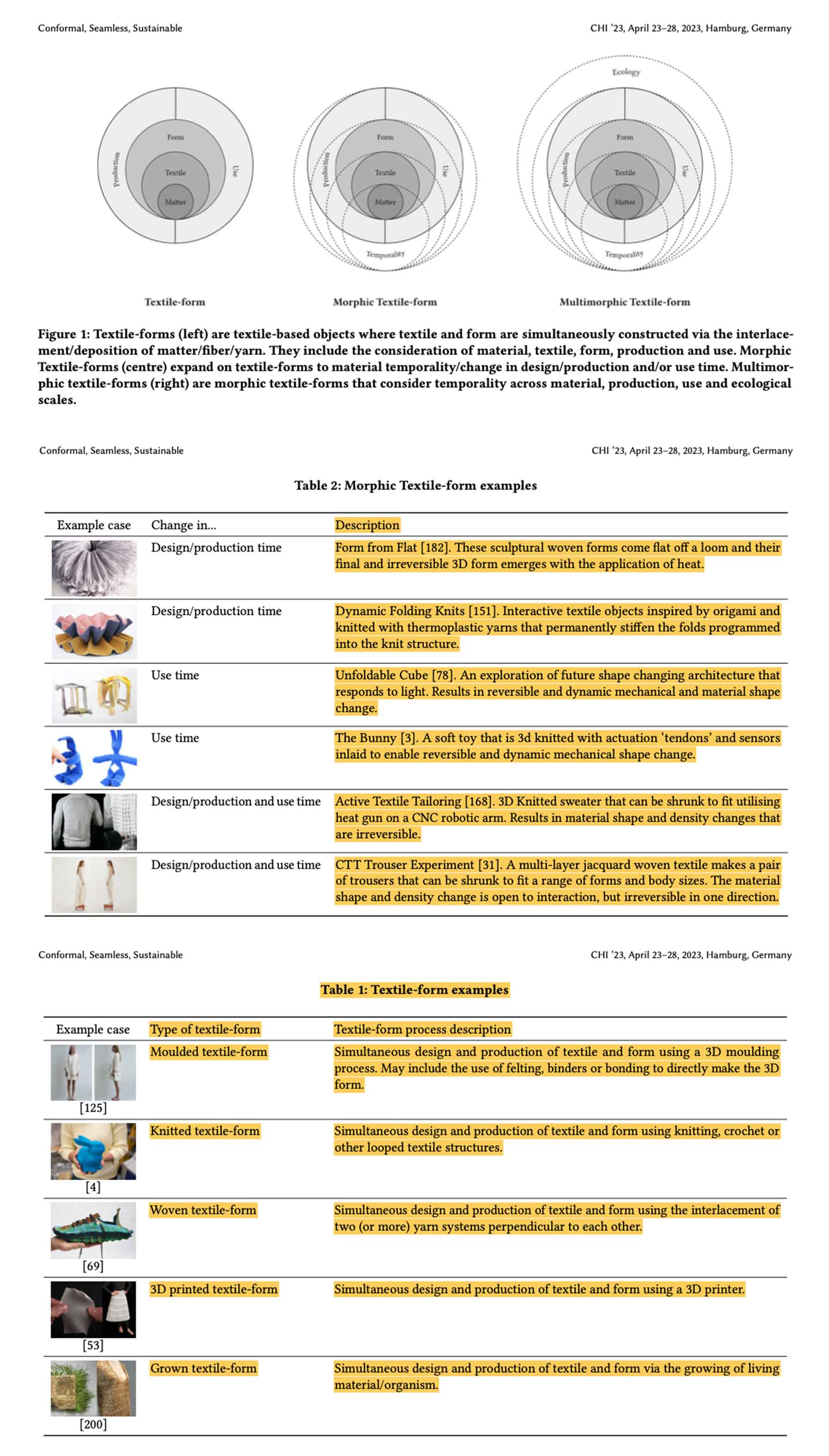 This is a project by Holly Mcquillan looking at different
This is a project by Holly Mcquillan looking at different
Morphic Textile-Forms¶
 Another project by Holly Mcquillan exploring
Another project by Holly Mcquillan exploring
Subtraction Cutting¶
 This is a type of pattern cutting created by Julian Roberts. "The basic premise of Subtraction Cutting is that the patterns cut do not respresent garments outward shape, but rather the negative spaces within the garment that make them hollow. Simply put, shaped holes cut from huge sheets of cloth through which the body moves."
This is a type of pattern cutting created by Julian Roberts. "The basic premise of Subtraction Cutting is that the patterns cut do not respresent garments outward shape, but rather the negative spaces within the garment that make them hollow. Simply put, shaped holes cut from huge sheets of cloth through which the body moves."
Weekly Project¶
Joint Testing¶


Taking the idea of subtraction cutting as the basis for my work this week, I first began by trying a modular way of closing holes in on themselves and then closing different holes together. These first attempts worked on the basic level, but i thought that only using a few specifically placed male components of the modular joint was quite limiting regarding the possible shaping options.
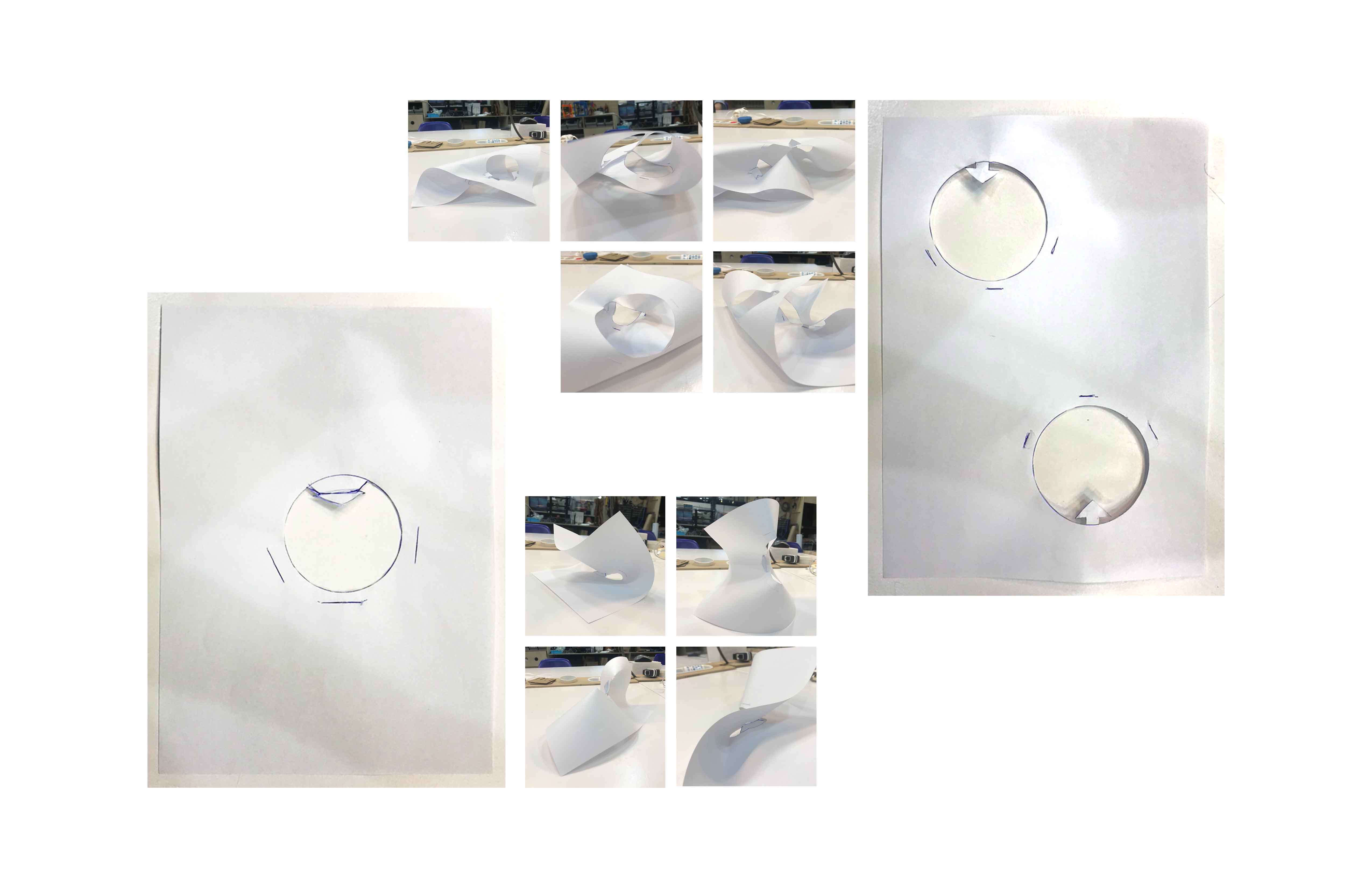
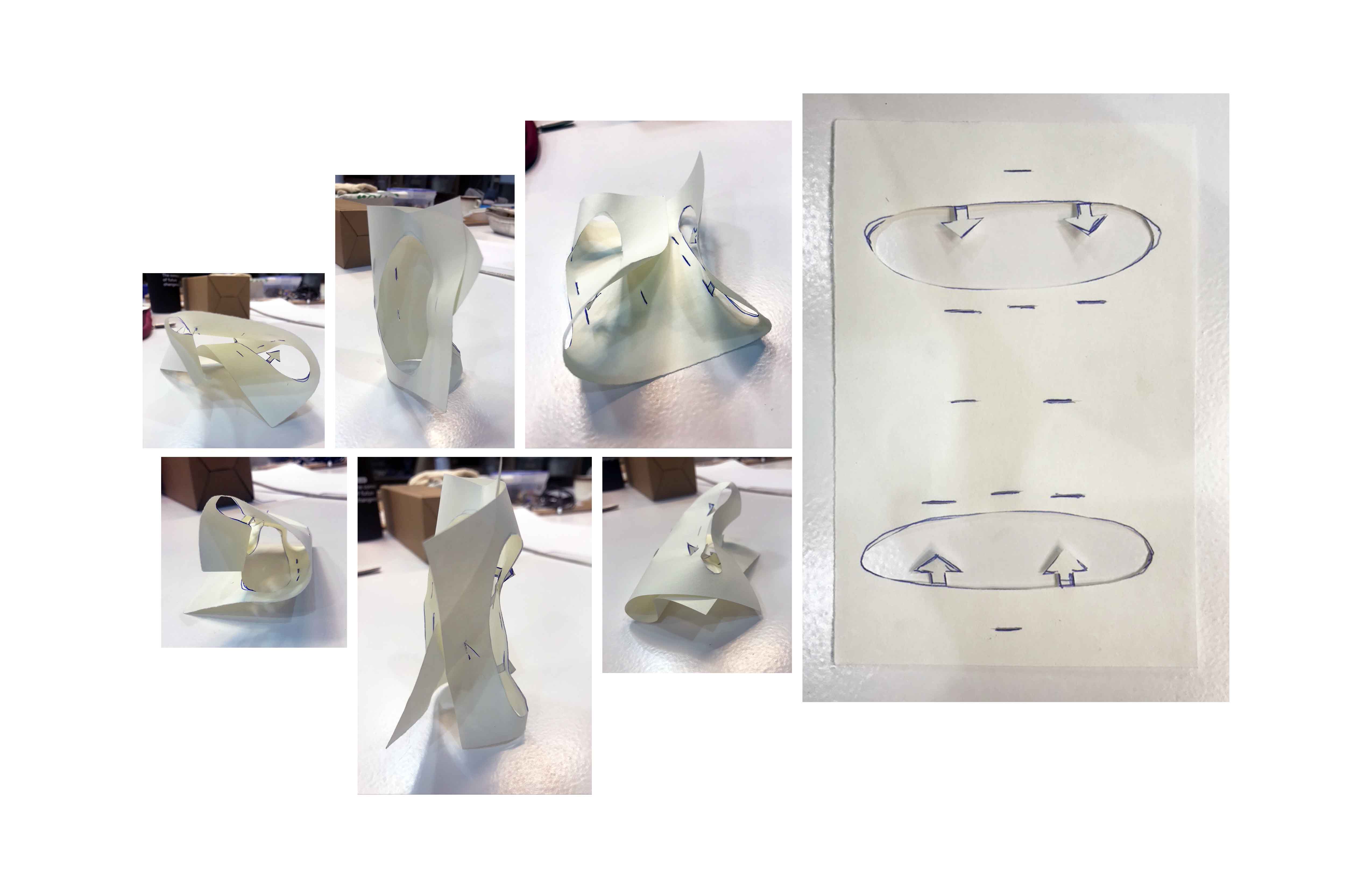
To try to open up the options available, I briefly moved away from the subtraction cutting basis to try to develop my modular link in a more basic shape. I wanted to try joints that would work kind of like a large scale seam rather than creating lots of little parts to be put together. First, I tried weaving 2 pieces into a grid of slits cut into a separate third piece. The perpendicular weave meant that this was relatively secure but I thought that the need for so many pieces could make it quite difficult to work out the pattern and result in a lot of overlapping which would just be a waste of fabric. Next, I tried cutting a row of diagonal slits near the edge of two pieces and cutting a separate zigzag piece that was meant to go between them to act like a large scale thread. This did not work and I could only get the zigzag to join one of the slits not the whole seam.
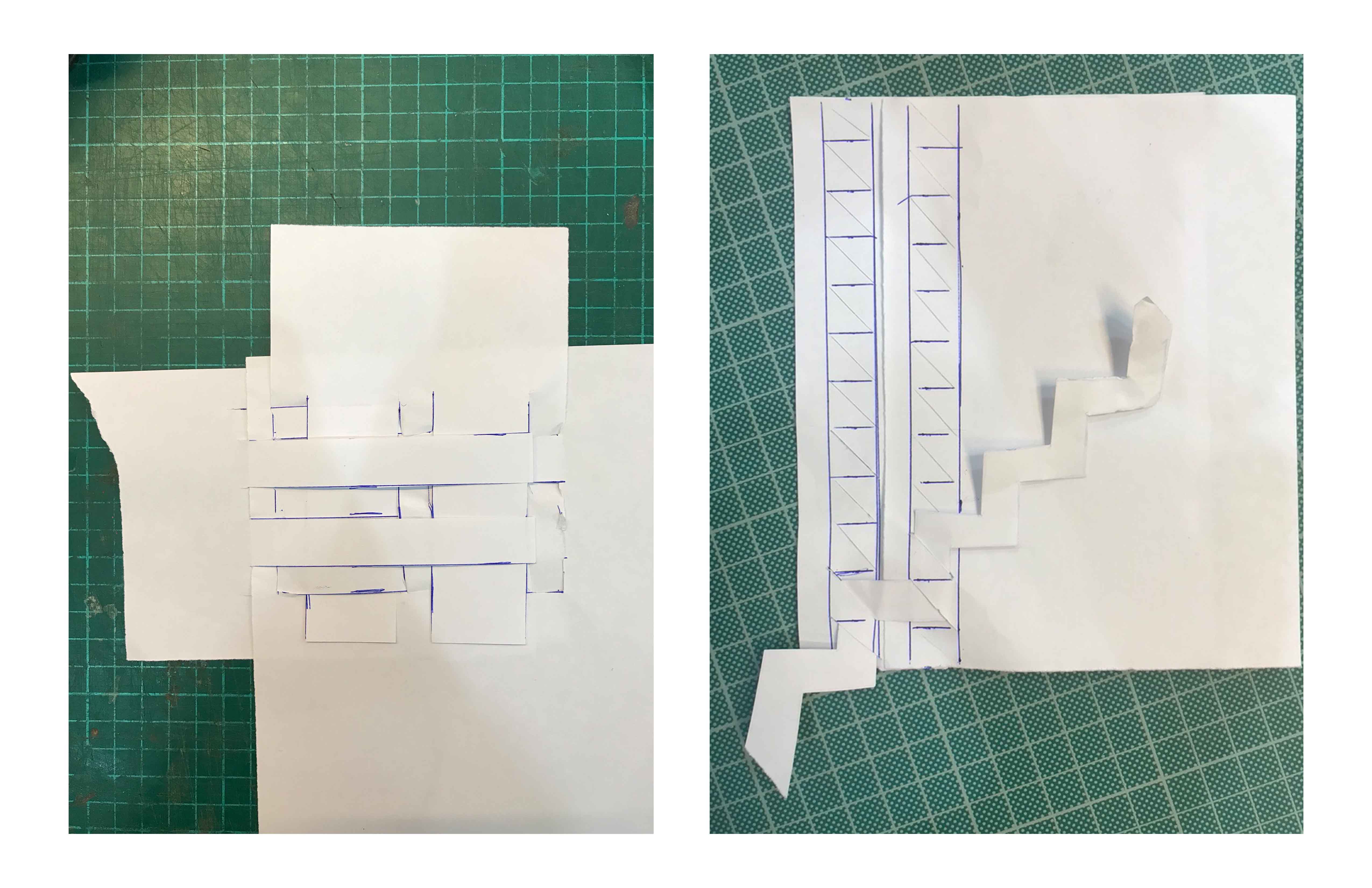
Next, I tried to combine these two and use a separate seaming piece but to almost weave it through the slits at the edge. This worked well as a joint but was quite unsecure as I had used a relatively thin seaming piece so the pieces were only woven through one slit. To combat this I though I had two options; to extent the seaming piece and the weave a lot which would waste a lot of fabric and still be limited in its security, or to add a locking piece somehow.
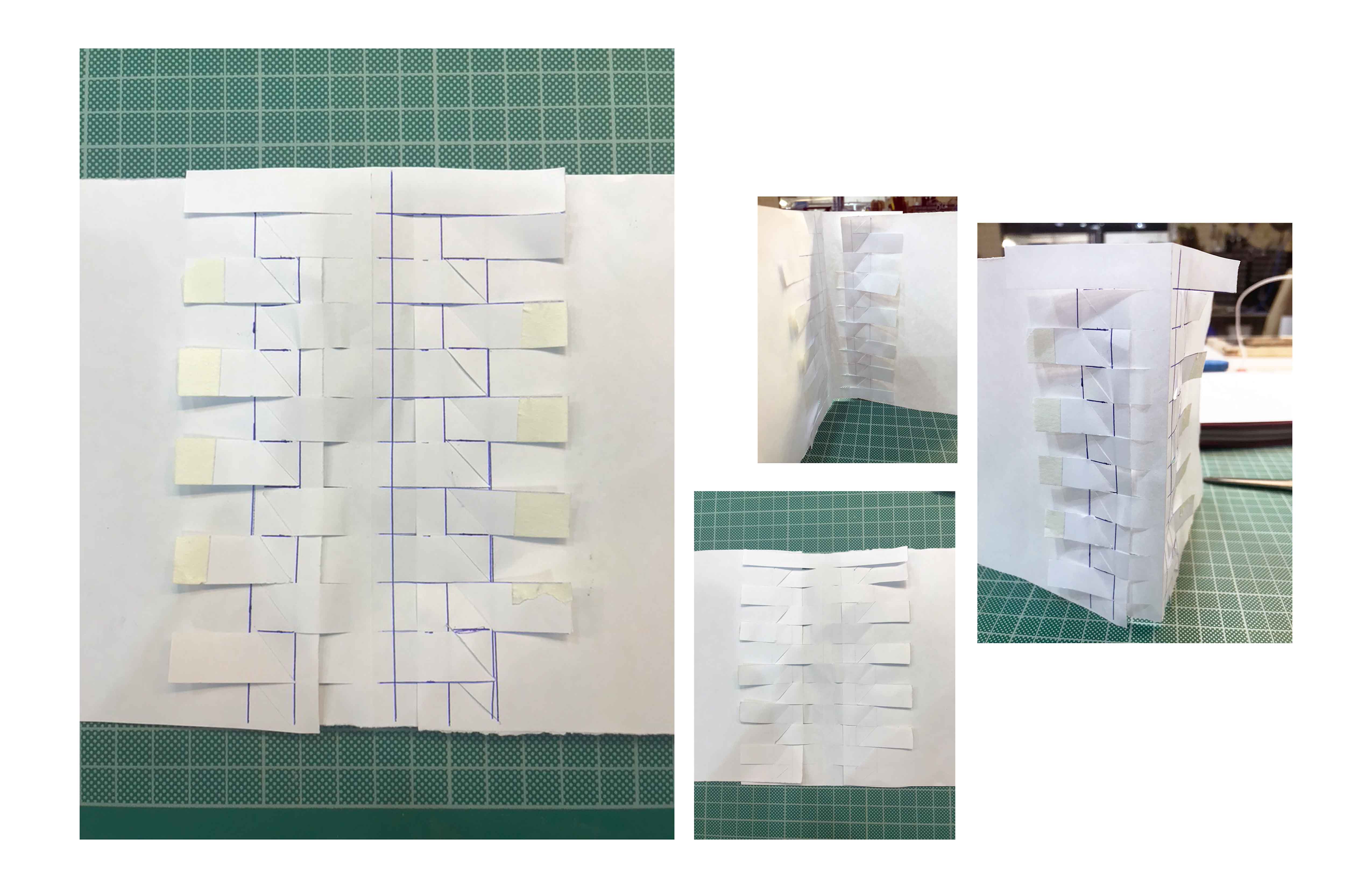
I decided to try adding a locking piece into the end of the woven parts. For this, I thought about the structure of knit and decided to add a slit in the weaving pieces so I could add a perpendicular piece to stop them being pulled back out of the weave. I tried this using diagonal slits aligned in a single line and vertical slits aligned in two lines to see if the direction made any differenct to the security of the joint. There didnt seem to be much difference between the two methods so I deceded to choose based on the final pattern I selected.

Pattern Development¶
Having settled on a joining method, I returned to the overall pattern I wanted to use it on. First, I needed to check that the joint method would work when combined with subtraction cutting. I wanted the pattern to be zero waste so I used the ellipse that would be removed from the fabric as the seaming piece and cut the slits at regualr intervals around the cut. This didnt not work to completely close the shape but it did work os a joint and added nice shaping to the paper so overall I was happy with it.

Next, I made a subrtaction pattern for a basic shift vest and added a few more circles to cut out for shaping and made a half size sample from black neoprene. I was very happy with this sample in the intented shift function but I also tried to join it in a few other ways to see how much freedom there was in the outcome from one pattern. This resulted in some other options that I like and a few that maybe weren't as wearable but overall, I thought that it was a success.
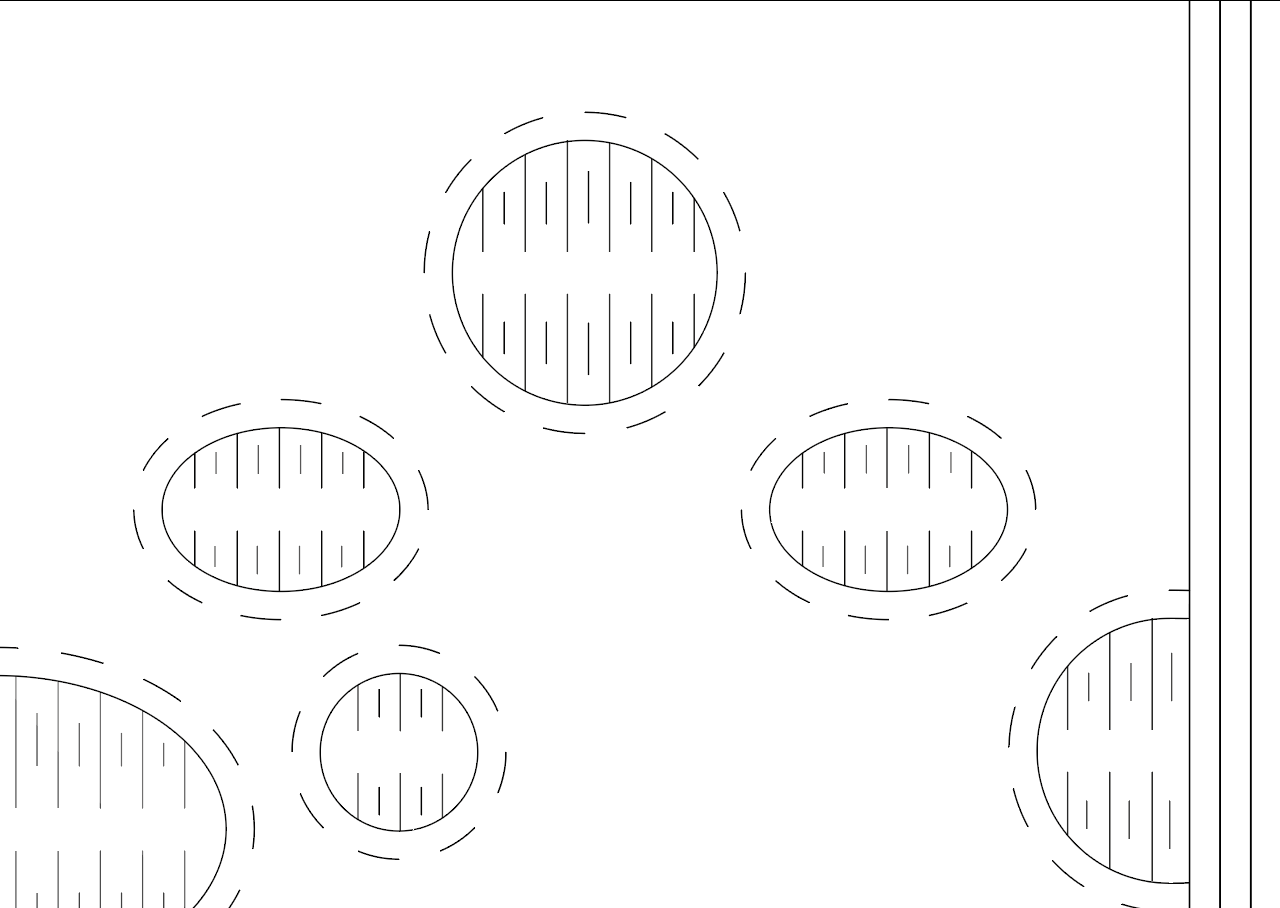
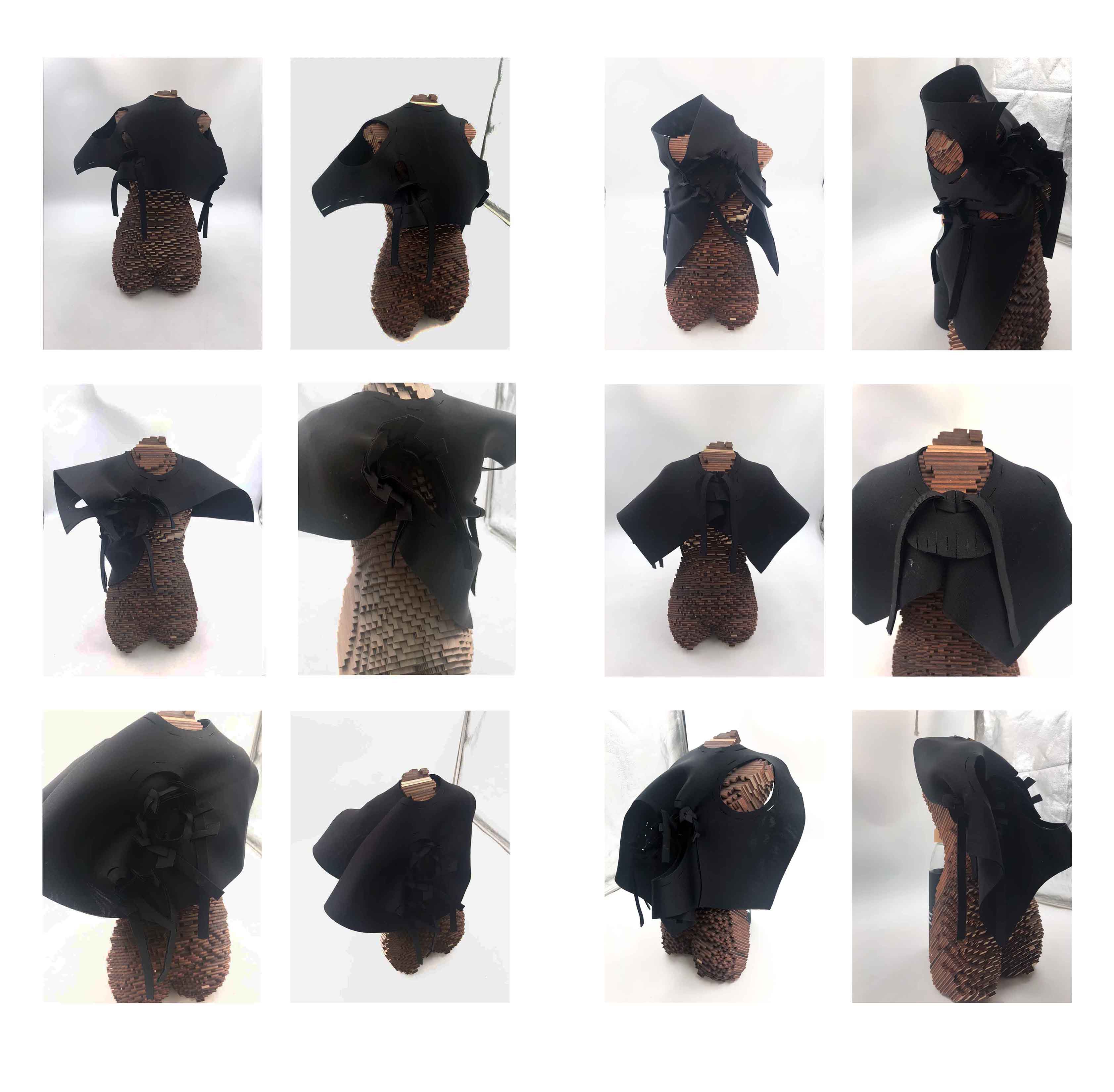
Following this, I decided to map out and trial a few different subtraction patterns. I created 12 basic patterns for a range of graments and quickly trialed them to check they would actually work as I have only worked with this method of pattern cutting a few times and am not super confident with it. All 12 worked at a basic level so I decided to move on to combining them to create a single pattern for multiple garments.
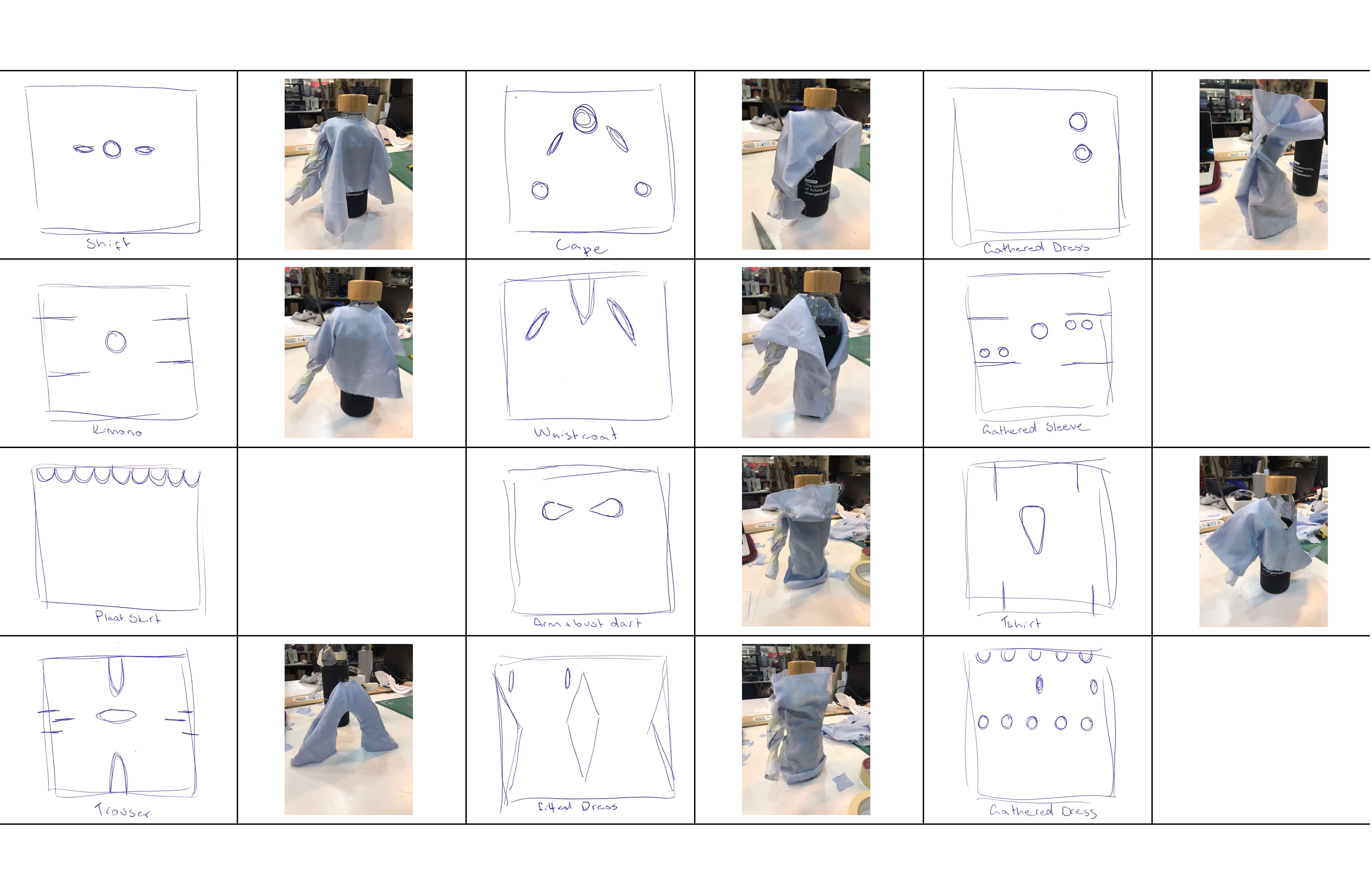
Once i had created a scaled version of all the patterns in Illustrator, I played around with which ones would work together. I wanted the pattern to make at least 3 garments with minimal alterations to any of the patterns. This automatically removed patterns with really big cuts like the fitted dress and this couldn't work with any of the others but I did manage to get a decent selection of options that I though could work.
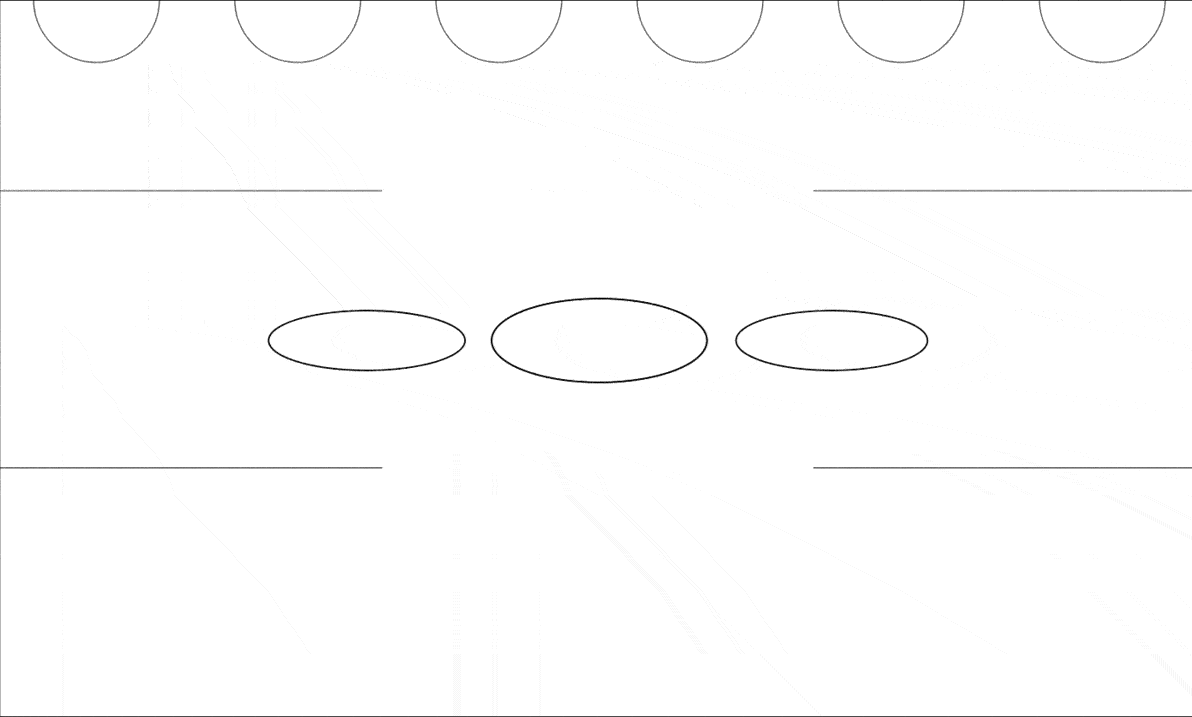
Final Garment¶
I settled on the combination of the shift vest, shorts and tshirt, these 3 patterns combined with only a few alterations so I was quite confident that I would be able to create all 3 from the final cut. Once I had finalised the pattern, I laser cut it in black 1.5mm neoprene.
The settings I used for the laser cutter were:
| Power | Speed | Hz |
| 45 | 1 | 1000 |

Below is one example of how the garment could be constructed so that it would become a shift vest.
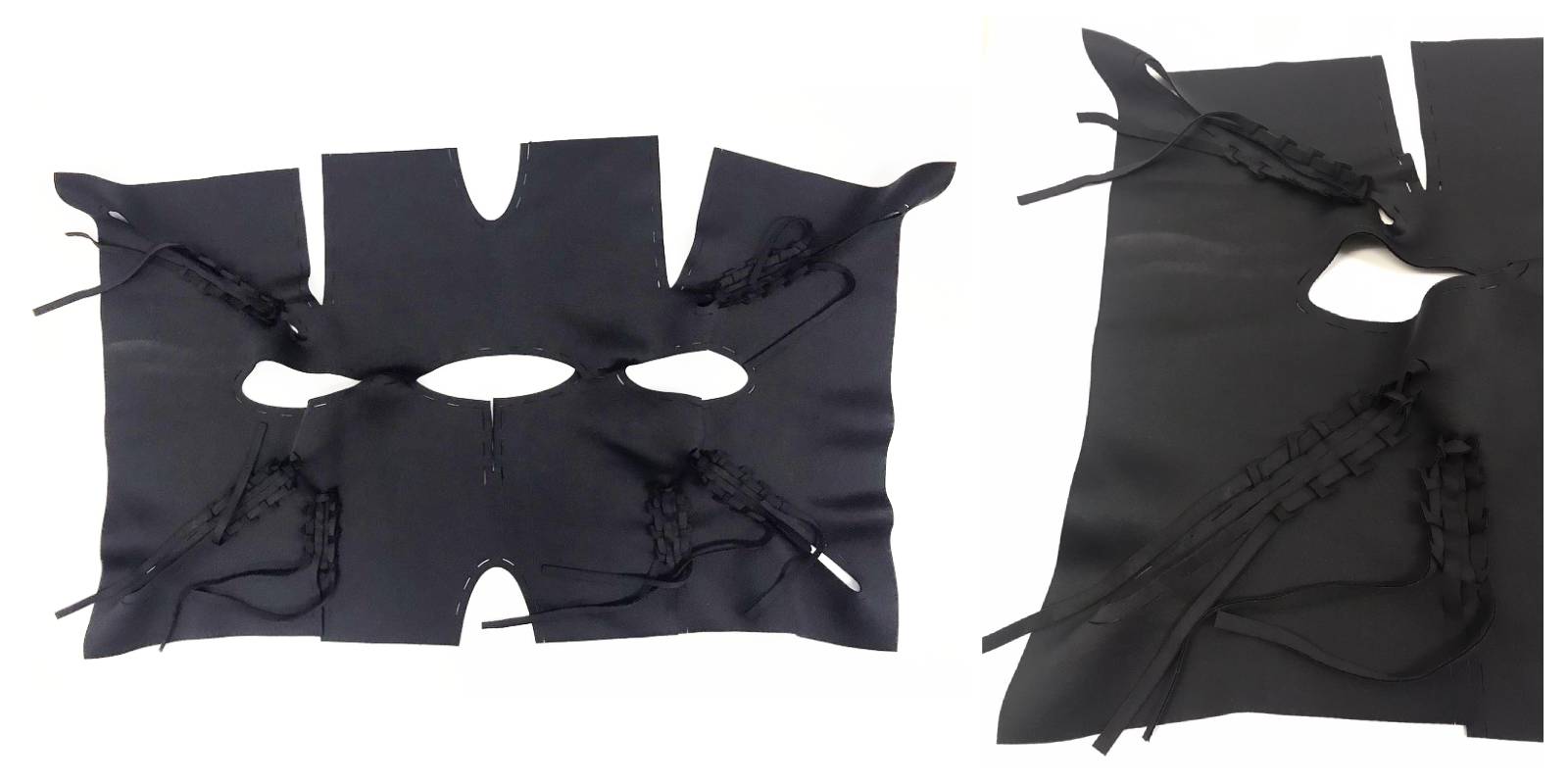

While this pattern was only based on the combination of 3 basic patterns, there is more openness in the construction options as demeonstrated with the 1st sample I made above. Below are 2 more possible constructions for this pattern:

For these shorts, I closed the joints as below, with each line joined to the coressponding one of the same colour.

Another top option with sleeves this time.

And the joints as follows.

Assembly videos¶
The different modules can be used to close any of the edges to another and there use should be detemined by the lengths needed. Below are some examples of the closing method:
Fabrication files¶
All fabrication files uploaded here: Laser Cutting Files
Or view the project here
